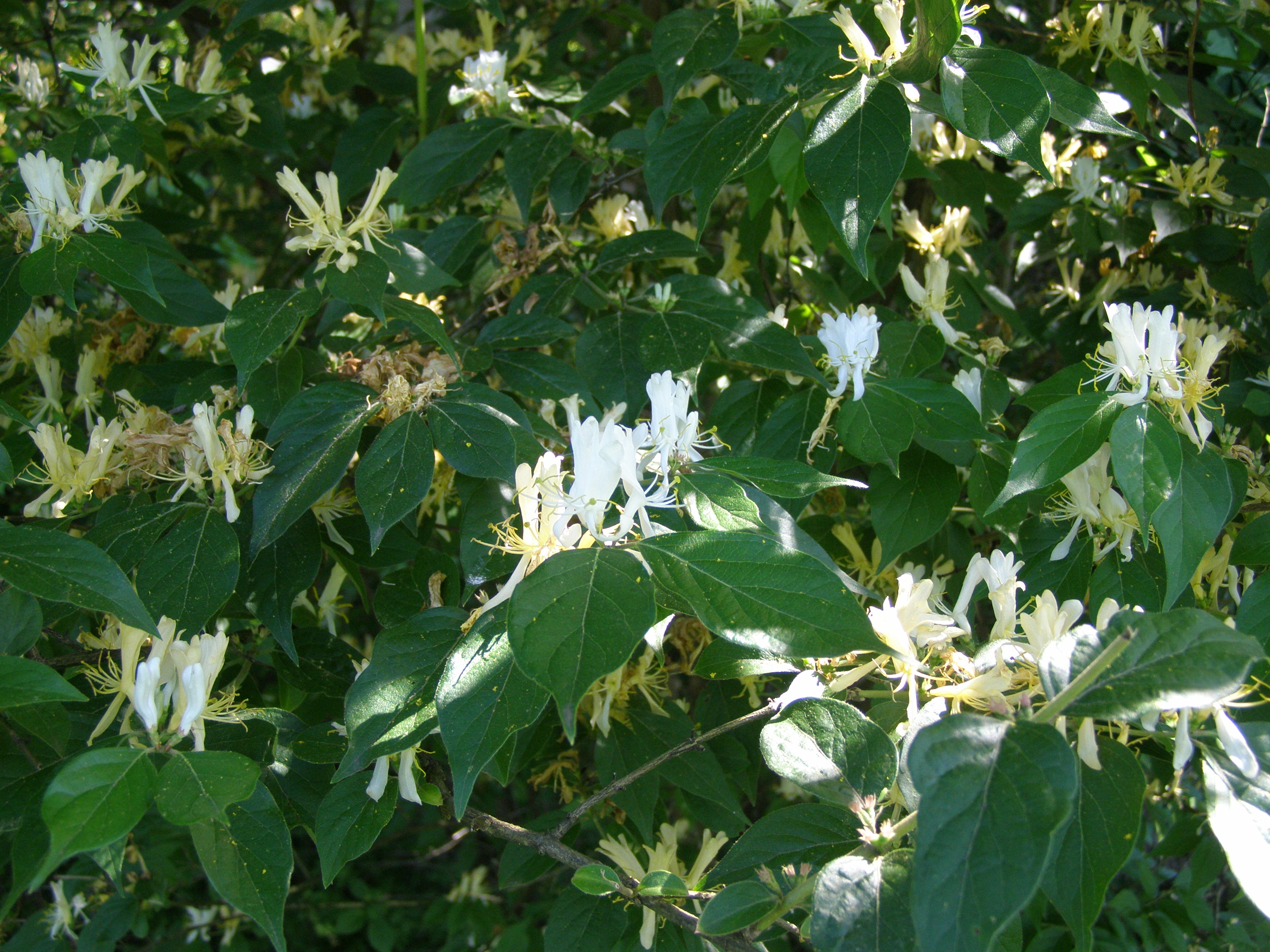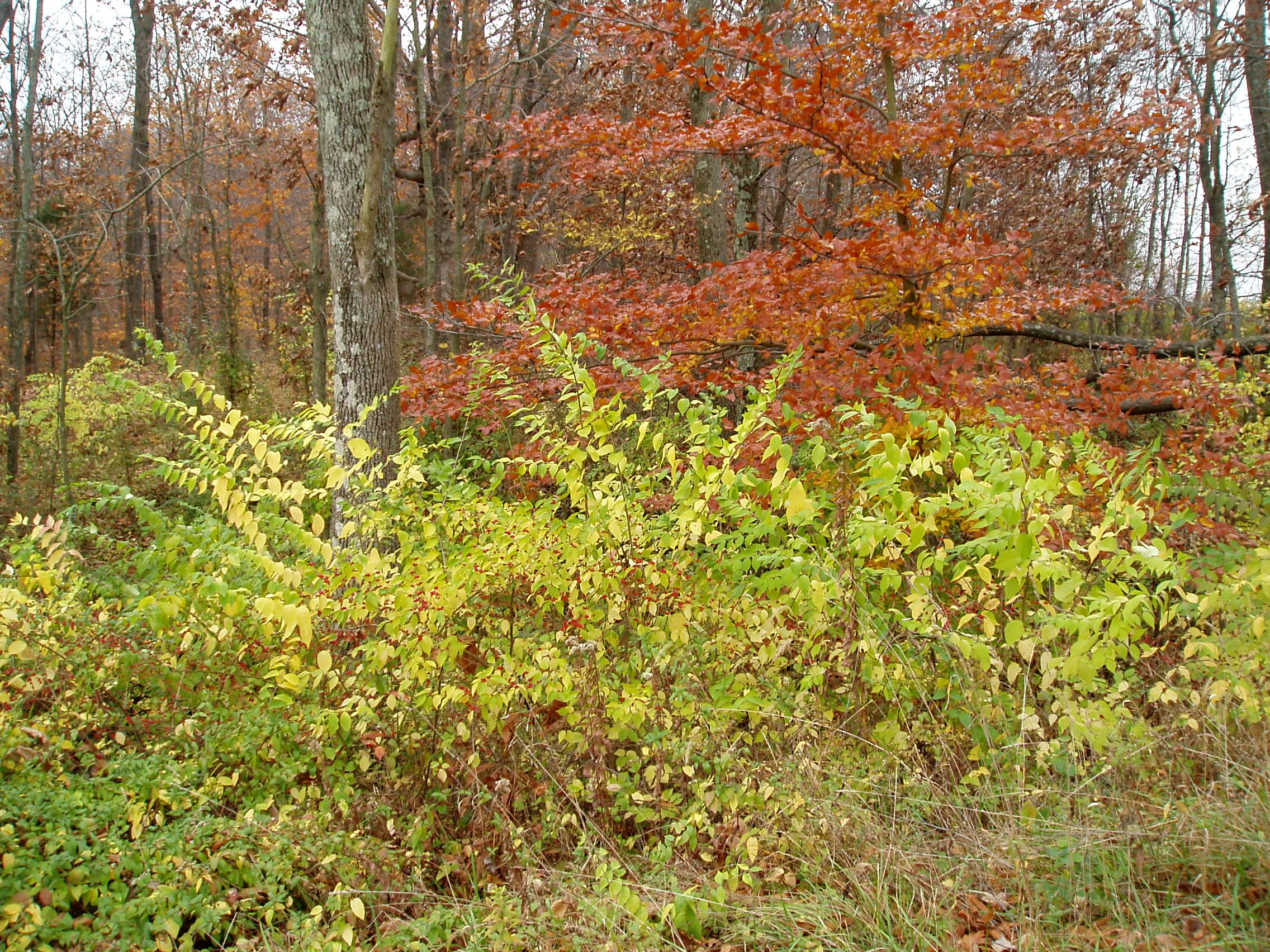Amur Honeysuckle, Lonicera maackii, is one of the most common invasive species we see in our county. Native to Korea, this shrub can take over the entire understory of a forest.
Why does this matter?
Amur Honeysuckle thrives in our region. They can grow up to 17 feet and form large stands that prevent native shrubs and other understory plants to persist. In the springtime, Amur Honeysuckles are the first to leaf out and can bear fruit as young as 3 years old. They can also grow in either full sun or full shade. This gives them a higher advantage for competition. Named Kentucky's Least Wanted Plant of 2000.
How are we managing it?
By killing it every chance we can. The three ways usually used to phase Amur Honeysuckle out:

- Manually, or by hand. This is useful for smaller invasions to remove seedlings or small plants.
- Chemically, through glyphosate herbicide.
- Prescribed burning prior to seed dispersal period, from late summer to early fall.



How can I identify Amur Honeysuckle?
Hint: it's probably in your backyard.
Amur Honeysuckle is easy to recognize! It is an erect, multi-stemmed shrub with arching branches. Their leaves are opposite, simple, ovate, around 3 inches long, and green and slightly paler on the bottom side. Their flowers are tubular with thin petals, coloring from yellow to white in late spring. Remember those little flowers you used to pull the little stigma from in the middle to suck on? That's an Amur Honeysuckle flower! In late summer, their berries are very red.
Native Alternatives

Winter-berry Holly
Ilex verticillata

Spicebush
Lindera benzoin

